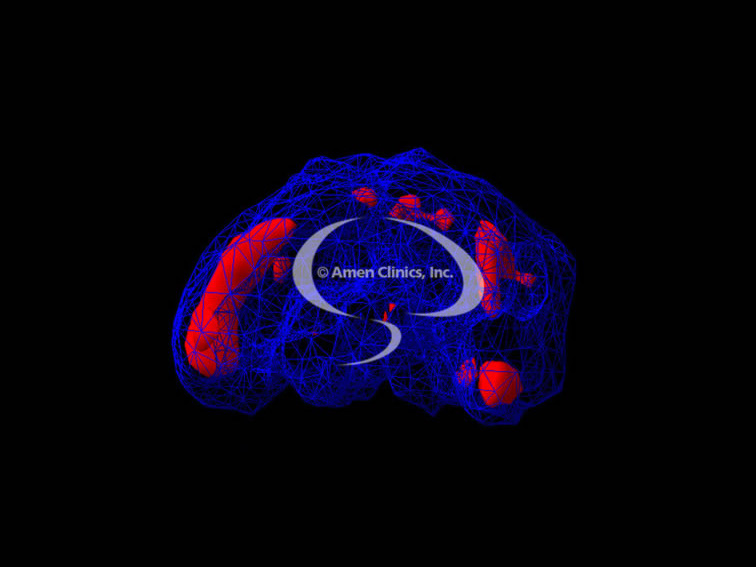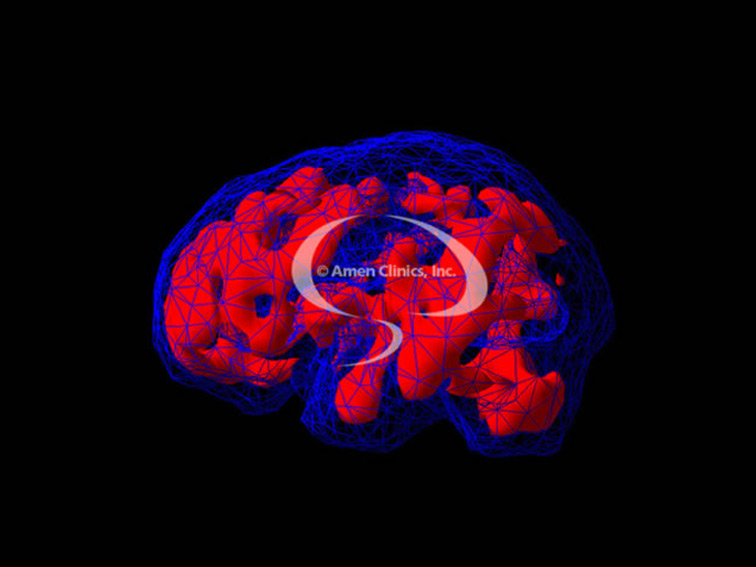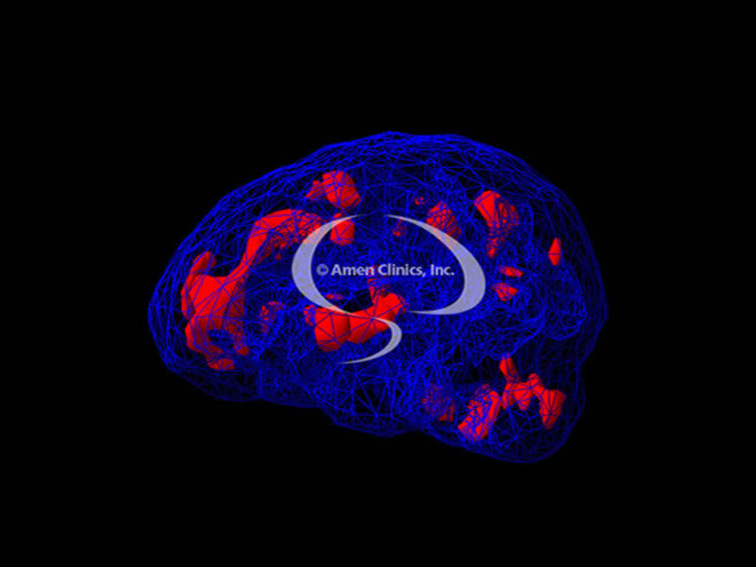RESEARCH DOCUMENTS
Bibliography
Recent Articles
by Boyle C., & Jindal-Snape, D. (2012). British Journal of Support for Learning, 27(4), 166-171. DOI: 10.1111 /1467-9604.12001
by Stephen J. Loew and Kenneth Watson, Centre for Bioactive Discovery in Health and Ageing, School of Science & Technology, University of New England, Armidale. Perceptual and Motor Skills, 2012, 114, 3, 870-882. © Perceptual & Motor Skills 2012.
by Stephen J. Loew, Estrella Fernandez and Kenneth Watson, University of New England {Australia), University of Oviedo {Spain). Au/a Abierta 2013, Vol. 41, num. 3, pp. 23-32, ICE. Universidad de Oviedo. ISSN: 0210-2773
lrlen and the Brain
by Jeffrey Lewine, Ph.D., John Davis, Ph.D., Sherri Provencal, M.A., James Edgar, M.A., and William Orrison, Jr., M.D.
by Andrew Yellen, Ph.D. and Thomas Schweller, M.D.,
by Robert Dobrin, M. D., F .A.A. P
by Daniel G. Amen M.D. Brain in the News, Newsletter
RESEARCH ARTICLES
by Chouinard, B.D., Zhou, C.I., Hrybouski, S., Kim, E.S., Cummine, J. (2012). Brain Topography, 25 {3), pp. 293-307.
by Huang, J., Zong, X., Wilkins, A., Jenkins, 8., Bozoki, A., Cao, Y. (2011 ). Cephalagia, 31 (8):925-36.
IRLEN SYNDROME STUDIES
After contacting the lrlen Dyslexia Centre you will be sent a child or adult detailed survey form by mail or email. When the form has been completed and it has been established that most answers are in the often or sometimes column (Some people will have positive responses in some sections and not in others) you should make an appointment as lrlen spectral filtered lenses are likely to be of benefit. Benefits will range from improved comfort, eyestrain and headaches to improved clarity, confidence and reading capabilities and in some – a life changing experience.
Brain Scans
American psychiatrist, Daniel Amen, has screened lrlen patients for over 10 years. He has performed before and after brain scans of patients with lrlen Lenses and found that while reading1 their brains appear more balanced. Some of these scans are reproduced above. Click the images to enlarge and view captions.



SPECT 3D Brain scans of an individual with lrlen Syndrome. Performed by Daniel Amen M.D., Medical Director, Amen Clinics Inc., Assistant Clinical Professor of Psychiatry and Human Behaviour, University of California, Irvine School of Medicine.
Further Brain Research
Diagnostic impressions using functional brain imaging are also confirmed by behavioural pediatrician and psychiatrist, Robert Dobrin, M.D., F .A.A.P. These are consistent with the work of psychologist, Andrew Yellen, Ph.D.1 and Thomas Schweller1
M.D., a board certified neurologist and professor of neurology at UC San Diego, who studied lrlen Syndrome utilising Visual Evoked Responses (VER) and documented the Yellen-Schweller effect.
Similar findings were presented at the 45th Annual Conference of the International Military Testing Association in Pensacola1 Florida, in the paper, Perceptual Dyslexia: It’s effect on the Military Cadre and Benefits of Treatment, by Susann L. Krouse and James H. Irvine. The U.S. Naval Education and Training Command (NETC) sponsored the Naval Aerospace Medical Research Laboratory (NAMRL) to assess the prevalence and possible impact of lrlen Syndrome.
The findings of Daniel Amen M.D. are also consistent with a Magnetoencephalographic study by Jeffrey David Lewine, Ph.D., John Davis, Ph.D., Sherri Provencal, M.A.,
James Edgar, M.A., and William Orrison, Jr., M.D., conducted at The Center for Advanced Medical Technologies, The University of Utah School of Medicine, Salt Lake City, Utah, and Department of Psychology, The University of New Mexico, Albuquerque, New Mexico.
Published Journals
Developmental Dyslexia has been documented in Proceedings of the National Academy of Science, with maior studies into lrlen Syndrome published in Annals of the New York Academy of Sciences, Australian Journal of Learning Disabilities, Australian Journal of Remedial Education, Behavioural Optometry, Focus on Dyslexia Research, Journal of Correctional Education, Journal of Research in Reading, Journal of the American Optometric Association, Ophthalmological and Physiological Optometry, Perceptual and Motor Skills, The Australasian Journal of Special Education and The Bulletin for Learning Disabilities.
BRAIN IMAGING STUDIES
by Jeffrey Lewine, Ph.D., John Davis, Ph.D., Sherri Provencal, M.A., James Edgar, M.A., and William Orrison, Jr., M.D.
by Drew Yellen
by Robert Dobrin, M.D., F.A.A.P
Brain in the News Newsletter by Daniel G. Amen M.D.
PEER REVIEWED JOURNALS
ANNALS OF THE NEW YORK ACADEMY OF SCIENCES
Yellow Filters can improve Magnocellular Function: Motion Sensitivity, Convergence, Accommodation and Reading
Synopsis: Yellow Filters should be tried in all children with reduced convergence and accommodation and reading before prisms, corrective lenses or exercises are prescribed.
Source: ANN. N.Y. Acad. Sci. 1039: 283-293 (2005). doi.10.1196/annals.1325.027
Authors: N J. Ray, S Fowler and J F. Stein
AUSTRALIAN JOURNAL OF LEARNING DISABILITIES
A Controlled Field Study of the use of coloured overlays on reading achievement
Synopsis: 71 Third Grade students in 2 US schools identified as having Irlen Syndrome were subject to immediate and delayed treatment with Irlen filters, and their improvements measured for rate, accuracy and comprehension. Improvements over 3 months were between 1.5 years and 2.7 years, with a plateau effect thereafter for one group.
Source: Australian Journal of Learning Disabilities 9,2, June 2004, 14-22.
Authors: Noble, Orton, Irlen & Robinson
AUSTRALIAN JOURNAL OF REMEDIAL EDUCATION
Irlen coloured lenses for reading: A six year follow-up
Synopsis: 94% of wearers of Irlen filters reported ongoing improvements after six years.
These results are compared with other studies.
Source: Australian Journal of Remedial Education 26,3 133-18 (Now The Australian Journal of Learning Disabilities.)
Authors: Whiting, Robinson & Parrott
BEHAVIOURAL OPTOMETRY
The effects of Irlen Coloured Filters on Eye Movement: A long-term placebo controlled and masked study
Synopsis: Found improvements in a range of visual tasks in 113 subjects with reading diffilculties using Irlen Filters. There were also linear effects for age.
Source: Behavioural Optometry 1,7,4, 5-18
Authors: Robinson & Foreman
FOCUS ON DYSLEXIA RESEARCH
The Family Incidence of a visual-perceptual subtype of dyslexia
Synopsis: In three studies, 83% of children with Irlen Syndrome had one or both parents with similar symptoms. Family history would be a useful factor in identifying children likely to have visual processing problems and reading difficulties.
Synopsis: 80% of 155 inmates participating in prison education programs had a high incidence of symptoms of Irlen Syndrome, cf.12-14% in the general population. Using coloured overlays, 56% showed considerable improvement and 33% moderate improvement.
JOURNAL OF CORRECTIONAL EDUCATION
The Incidence of Scotopic Senstivity Syndrome in Colorado Inmates
Synopsis: 80% of 155 inmates participating in prison education programs had a high incidence of symptoms of Irlen Syndrome, cf.12-14% in the general population. Using coloured overlays, 56% showed considerable improvement and 33% moderate improvement.
Source: Journal of Correctional Education 51,3, Sept 2000, 294-299.
Authors: Whichard, Feller & Kastner
JOURNAL OF RESEARCH IN READING
The relationship between dyslexia and Meares-Irlen Syndrome
Synopsis: Children with dyslexia seem to benefit more from coloured overlays than non-dyslexic children.
MIS and dyslexia are separate entities and are detected and treated in different ways.
Source: Journal of Research in Reading, ISSN 0141-0423 Volume 28, Issue 3, 2005, pp 350-364.
Authors: Kriss, I., and Evans, B.J.W.
JOURNAL OF THE AMERICAN OPTOMETRIC ASSOCIATION
Eye Movement efficiency in normal and reading disabled elementary school children: effects of varying luminance and wavelength
Synopsis: Blue filters resulted in a significant improvement in the number of fixations and regressions and rate of reading in reading disabled children.
Source: Journal of the American Optometric Association (1998).
Authors: Solan, Ficara, Brannan & Rucker
OPHTHALMOLOGICAL AND PHYSIOLOGICAL OPTOMETRY
Coloured Overlays and their effects on reading speed: A Review
Synopsis: Coloured overlays can reduce symptoms of visual stress and increase reading speed, and are not placebo.
Source: Ophthalmological and Physiological Optometry 22, 448-454 (2002). The College of Optometrists. Published by Elsevier Science Ltd. UK.
Author: Wilkins, A.
Coloured Overlays in Schools: Orthoptic and Optometric findings
Synopsis: The benefit children received from a coloured overlay was not related to orthoptic of optometric findings. Concludes that children with visually precipitated symptoms and/or reading difficulties need both evaluation of their accomodative and binocular status and investigation of the effect of coloured filters.
Source: Ophthalmological and Physiological Optometry 22, 156-165 (2002). The College of Optometrists. Published by Elsevier Science Ltd. UK.
Authors: Scott, McWhinnie, Taylor, Stevenson, Irons, Lewis, Evans, Evans & Wilkins
The effect of Coloured Filters on the rate of reading in an Adult Student population
Synopsis: Irlen Syndrome likely to be as common in adults as in children, and improvements using Irlen filters similar.
Source: Ophthalmological and Physiological Optometry 22, 535-545 (2002). The College of Optometrists. Published by Elsevier Science Ltd. UK.
Authors: Evans & Joseph
Both Coloured Overlays and Coloured Lenses can improve reading fluency, but their optimal chromaticities differ
Synopsis: For improvement in reading rate, overlay colours provide no clinically reliable guide to optimal lens colour.
Source: Ophthalmological and Physiological Optometry 19,4, 279-285 (1999). The College of Optometrists. Published by Elsevier Science Ltd. UK.
Authors: Lightstone, A., Lightstone T., & Wilkins, A
PERCEPTUAL AND MOTOR SKILLS
Biochemical Anomalies in people with Irlen Syndrome
Synopsis: Adds to the evidence for a biochemical basis for dyslexia and Irlen Syndrome. Discusses some of the complexities surrounding interpretation and practical applications of such findings.
Source: Australasian Association of Irlen Consultants Inc. 2004.
Authors: Robinson, Sparkes, Roberts & Dunstan
See also Robinson, G.L., McGregor, N.R., Roberts, T.K., Dunstan, R.H., & Butt, H. (2001) A biochemical analysis of people with chronic fatigue who have Irlen Syndrome: Speculation concerning immune system dysfunction. Perceptual and Motor Skills, 93, 486-504.
PROCEEDINGS OF THE NATIONAL ACADEMY OF SCIENCE
Physiological and anatomical evidence for a magnocellular defect in developmental dyslexia
Synopsis: Dyslexic individuals showed diminished visually evoked potentials to rapid, low-contrast stimuli but normal responses to slow or high-contrast stimuli. Post-mortem studies showed abnormalities in the magnocellular but not the parvocellular visual pathways.
Source: Proceedings of the National Academy of Science. 88, Sept 1991. 7943-7947
Authors: Livingstone, Rosen, Drislane & Galaburda
THE AUSTRALASIAN JOURNAL OF SPECIAL EDUCATION
The Interpretation of Emotion from facial expression for children with Irlen Syndrome
Synopsis: Children with Irlen Syndrome had significantly lower scores for interpreting emotion from facial expression than children with reading difficulty but no Irlen Syndrome, and children without reading difficulty.
Source: The Australasian Journal of Special Education 27,2,2003, 50-67.
Authors: Robinson & Whiting
THE BULLETIN FOR LEARNING DISABILITIES
The incidence of symptoms of scotopic sensitivity syndrome in a sample of Australian and New Zealand schools
Synopsis: Identified 12.5% of 856 school children as having “good” symptoms of SSS, and 8.5% as having “excellent” symptoms. Strong tendency for low teacher estimates of literacy competence and school achievement to be associated with such symptoms. Robinson, Hopkins & Davies found that 22% of 350 secondary school students in years 7 and 11 seemed to have significant symptoms of Irlen Syndrome.
Source/Authors: Robinson, G.L., Hobbs, M., Thomas, G., Freney, P., & Wilson, E. Unpublished paper. See also Robinson, G.L., Hopkins, B., & Davies, T., (1995) The incidence of scotopic sensitivity syndrome in secondary school populations: A prelimary survey. The Bulletin for Learning Disabilities 5(1), 36-56 and Robinson G.L., Foreman, P.J., & Dear. K., (1996) The familial incidence of scotopic sensitivity. Perceptual and Motor Skills 83, 1043-1055.
IRLEN CONFERENCE PAPERS
Please use the following links to access research papers presented at conferences by Greg Robinson BA, Dip Ed, MEd (Hons), PhD, MAPsS. (1944 – 2008). These discuss possible causes of Irlen Syndrome; investigate the effects of Irlen coloured filters on reading achievement; and survey the family incidence of symptoms of Irlen Syndrome.
by Robinson, G.L., Sparkes, D.L., Roberts, T.K., & Dunstan, H., presented at the Eighth International Irlen Conference, Brugge, Belgium, 7-11 July, 2004.
by Robinson, G.L., Sparkes, D.L., Roberts, T.K., Dunstan, H., & Conway, R.N.F., presented at the International Dyslexia Association, San Diego, CA, 12-15 November, 2003.
by Robinson, G.L., Sparkes, D.L., Roberts, T.K., Dunstan, H., McGregor, N.R. & Conway, R.N.F., presented at the Seventh International Irlen Conference, Vancouver, Canada, 11-14 July, 2002.
by Whiting, P.R. & Robinson, G.L., presented at the Seventh International Irlen Conference, Vancouver, Canada, 11-14 July, 2002.
by Robinson, McGregor, Roberts, Dunstan, and Butt has been published in a modified form in the Australian Journal of Learning Disabilities, Volume 4, No. 4, pp.21-30, December, 1999.
by Robinson has been published in a modified form in Perceptual and Motor Skills, Volume 89, pp.83-113, 1999.
published in a modified form in Perceptual and Motor Skills, Volume 91, pp.707-724, 2000.

